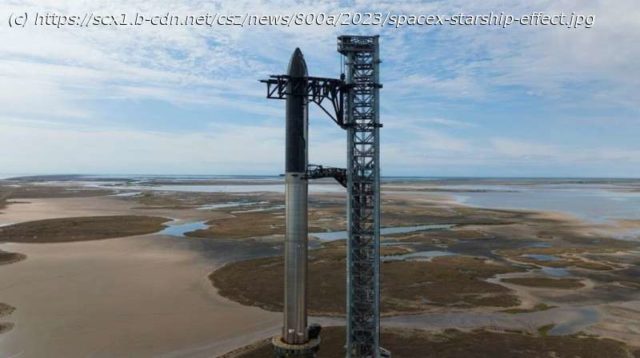It was an exciting time when, two weeks ago, SpaceX got the clearance it needed to conduct its first orbital flight test with the Starship and Super Heavy launch system. After years of waiting, SN flight tests, static fire tests, and stacking and unstacking, the long-awaited test of the SN24 Starship and BN7 Booster prototype was on. For this flight, SpaceX hoped to achieve an altitude of at least 150 km (90 mi) above sea level, crossing the 100 km (62 mi) threshold that officially marks the boundary of „space“ (aka. the Karman Line) and making a partial transit around the world before splashing down off the coast of Hawaii.
It was an exciting time when, two weeks ago, SpaceX got the clearance it needed to conduct its first orbital flight test with the Starship and Super Heavy launch system. After years of waiting, SN flight tests, static fire tests, and stacking and unstacking, the long-awaited test of the SN24 Starship and BN7 Booster prototype was on. For this flight, SpaceX hoped to achieve an altitude of at least 150 km (90 mi) above sea level, crossing the 100 km (62 mi) threshold that officially marks the boundary of „space“ (aka. the Karman Line) and making a partial transit around the world before splashing down off the coast of Hawaii.
Unfortunately, things began to go awry a few minutes into the flight as the Starship prototype failed to separate from the booster, sending the rocket into a spin that ended in an explosion. While Musk and SpaceX issued statements that the test was largely successful and lots of valuable data was obtained, residents and environmental researchers claim the explosion caused damage to houses in the area and the local environment. In response, the FAA has launched a „mishap investigation,“ temporarily grounding the Starship until the explosion’s impact can be assessed.
The timing of the flight test was certainly fortuitous, falling on April 20th (4/20) exactly as Musk had previously predicted. Everything appeared to be in the green as all 33 engines of the BN7 booster fired, and the fully stacked and fueled prototype lifted off without incident. About three and a half minutes into the flight, when stage separation was supposed to occur, the Starship began an uncontrolled tumble and was destroyed by onboard charges. The SN24 and BN7 managed to reach an altitude of 40 km (25 miles) before the anomaly occurred.
Musk commended the ground teams, tweeting, „Congrats @SpaceX team on an exciting test launch of Starship! Learned a lot for next test launch in a few months.“ At the same time, it was clear that some sizeable changes needed to be made. In addition to the mid-air explosion, the launch also destroyed the launchpad, which sent debris flying in all directions.






